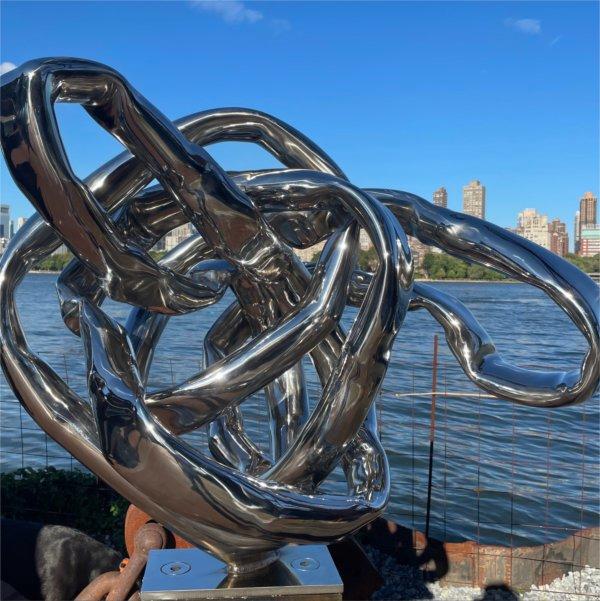
Visual thinking workshop connects art, health professions for students



Standing before a painting and discussing with classmates what they see is status quo for students majoring in visual arts.
It was new territory for students majoring in nursing and health professions October 3, when artist-medical educator Alexa Miller led a workshop in visual thinking by using the artwork in the Cook-DeVos Center for Health Sciences as a backdrop. About 30 art, nursing and health professions students attended.
Miller is the co-creator of a Harvard Medical School course that introduces art as a means of enhancing visual diagnostic and communication skills. Jill Eggers, associate professor of visual and media arts, has developed a new undergraduate course at Grand Valley based on the Harvard course.
Eggers received a teaching innovation grant from the Pew Faculty Teaching and Learning Center to bring Miller to campus for a community presentation and two workshops related to the new course, "Learning to See: Visual Training for the Health Professional."
After introducing the concept, Miller led students to the CHS hallway where they were asked to study "Floating Bed," a large oil painting by Stephen Duren, then discuss their reactions. Miller said the act of quietly reflecting on a piece of artwork has many similarities to being a caregiver or working in the health care field.
"Listening to and observing a patient are similar skills to what it taught in an art setting," Miller said. "As a health professional, you are taught to stay neutral and create a climate in which patients and their family members feel comfortable communicating to you."
Eggers said she hopes there are more interdisciplinary opportunities to incorporate art into a course curriculum. Stacey Burns, programs manager for the Art Gallery, is available to help faculty members who are interested in holding visual thinking strategy sessions with their classes.
"We're learning how the art curriculum can serve the medical field," Eggers said. "It's teaching people to become more attentive and present, and to be more creative in their thinking."
Subscribe
Sign up and receive the latest Grand Valley headlines delivered to your email inbox each morning.








